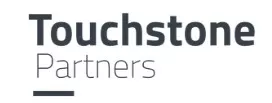This article co-authored by Karam Daulet-Singh, Managing Partner, Yashasvi Mohanram, Partner, and Associates Vaishnavi Sankar and Achint Jain, explores the recent regulatory changes in the Indian insurance sector with specific focus on the key implications from the perspective of financial and overseas investors.
Background
The years 2021 and 2022 saw a series of changes in the regulatory regime governing Indian insurance companies, several of which were aimed at relaxing the investment restrictions in the sector. The most recent of these changes were made in November and December 2022, which included the notification by the Insurance Regulatory and Development Authority of India (IRDAI) of the IRDAI (Registration of Indian Insurance Companies) Regulations, 2022 (the 2022 Registration Regulations) and the IRDAI (Other Forms of Capital) Regulations, 2022 (the Other Capital Regulations). In addition to these notifications, the Ministry of Finance released certain proposed amendments to the Insurance Act, 1938 and Insurance Regulatory and Development Authority Act, 1999 for public comments.
We set out below the key implications of these changes and proposals, specifically from the perspective of financial and overseas investors in the context of investments in Indian insurance companies.
Investor-Promoter distinction now more in sync with other Indian legislations
Every shareholder in an Indian insurance company is classified as either an "investor" or a "promoter". Unlike in most other sectors, apart from certain enhanced lock-in requirements in specified scenarios, classification as a "promoter" of an insurer results in the shareholder being obliged to infuse additional capital from time to time to ensure the insurer's compliance with regulatory solvency requirements.
Previously, under the IRDAI (Registration of Indian Insurance Companies) Regulations, 2000, financial investors were subject to an individual limit of 10% and a collective limit of 25% in connection with their investments in any insurance company. The individual 10% threshold was clearly at odds with both the Indian Companies Act, 2013 which employs a 25% shareholding threshold to determine blocking rights for special resolutions and the takeover regime for listed companies prescribed by the Securities and Exchange Board of India (SEBI) which employs a 25% threshold for mandatory open offer triggers. The 2022 Registration Regulations have put an end to this inconsistency by capping the individual investor limit at below 25% (and the aggregate investors' limit at below 50%). So, going forward, financial investors can invest up to 24.9% in an insurance company without being classified as a promoter, though any such investor will need to be careful to ensure that it does not "control" the insurer through other means such as voting arrangements or governance rights in relation to the insurer. However, the 2022 Registration Regulations expressly provide the right for a financial investor to nominate a director on the board of an insurer if its investment exceeds 10%.
It is relevant to note that the new sub-25% limit will be available only if an investor proposes to invest in a single insurer. As a default rule, if an investor proposes to invest in multiple insurers, its stake in each insurer will continue to be capped at 10%. Even previously, this rule was implemented by the IRDAI as a matter of practice. A prominent example in this regard was Fairfax Financial Holdings, which was required to reduce its shareholding in ICICI Lombard to below 10% in 2017 as a condition to the IRDAI's approval for a separate general insurance venture in which Fairfax had invested. An exception has now been carved out under the 2022 Registration Regulations for investments between 10% and 25% in up to two insurers in each class of insurance business (i.e., life, general, health and reinsurance). In practice, given the 10% cap for investments by foreign portfolio investors (FPIs) and financial investors being unlikely to make significant investments in two insurers of the same class, this exception for investments between 10% to 25% in up to two insurers in each class may well be more relevant for domestic financial investors.
Interestingly, this "twilight zone" between 10% and 25% is also a feature under the merger control regulations of the Competition Commission of India (CCI) as well as the promoter classification rules of SEBI. Under the merger control regulations, investors holding between 10% and 25% do not automatically qualify for the exemption on the basis of being "solely as an investment" but would instead be reliant on establishing that they do not otherwise have "control" over the target company. Similarly, while the definition of "promoter" under the SEBI regulations is linked to having "control" over the target company (which, in practice, is pegged at the mandatory open offer trigger threshold of 25%), a shareholder who is already classified as a promoter can be declassified (i.e., as a public shareholder) only if it were to bring down its shareholding to 10% or below.
While the term "promoter" is specific to the regulation of insurers in the Indian context, the analogous concept of "control" and threshold for triggering regulatory approvals are consistent with the practice across major overseas jurisdictions. It is worth noting that with the 2022 Registration Regulations, the quantitative threshold of 25% for qualifying a shareholder as being in "control" of an Indian insurer is higher compared to other jurisdictions such as the US, UK and the EU (where the triggering threshold is 10%) and Singapore (where the threshold is 20%).
Separately, it is important to note that under the 2022 Registration Regulations, the minimum shareholding of the promoters of an insurer is required to be collectively maintained at above 50% of the paid-up equity capital of the insurer. Promoters of listed insurance companies with a track record of having maintained adequate solvency ratio for the preceding five years are partially exempted from this requirement and can dilute their stake in the insurer below 50% percent but will need to remain above 26%.
Relaxation of Approval Thresholds
Both under the IRDAI (Transfer of Equity Shares of Insurance Companies) Regulations, 2015 (the Old Transfer Regulations) and the 2022 Registration Regulations, in respect of any transfer or fresh issuance of shares, the requirement to seek IRDAI's prior approval is triggered if either the nominal value of shares involved exceeds 1% of the insurer or the investor's shareholding following the transfer / issuance exceeds 5%. So, an investor acquiring stakes of more than 1% in multiple tranches would end up having to approach the IRDAI for approval at each stage. The draft amendments to the Insurance Act proposed by the Ministry of Finance seek to address this anomaly by increasing the first threshold from 1% to 5% of the insurer. This proposal is also meant to align the approval threshold for share transfers in insurers with the corresponding threshold specified by the Reserve Bank of India for investments in banks.
In the context of listed insurers, as before, the 2022 Registration Regulations provide for a deemed approval pursuant to a self-certification in respect of share transfers between 1% and 5% but provide for prior IRDAI approval for any transfers / acquisitions above 5%. However, the 2022 Regulations also specify a look through test where if the acquisition or aggregate holding is proposed to be less than 5% but if the concerned insurer suspects that "dubious" methods have been adopted to get over the ceiling, the insurer will be required to refer the matter to the IRDAI.
Separately, the Other Capital Regulations now enable insurers to issue preference shares and subordinated debt to both Indian and foreign investors without having to seek the prior approval of IRDAI in the normal course. However, several restrictions in connection with the issuance of preference shares and subordinated debt - no security, non-convertibility into equity shares, long maturity period of 7 to 10 years etc. - mean that plain vanilla equity shares may continue to be the predominant instrument for routing investments into Indian insurance companies.
Enhanced Structuring Flexibility for PE Funds
Prior to 2017, there were no regulations specifically catering to private equity funds (PE Funds), who were considered on par with other investors for the purpose of investment. However, in 2017, with an increase in the appetite for PE Funds to acquire significant stakes in insurance companies, the IRDAI notified the IRDAI (Investment by Private Equity in Indian Insurance Companies) Guidelines, 2017 (2017 PE Guidelines) to regulate investments by PE Funds in unlisted insurance companies. The 2022 Registration Regulations have introduced certain changes to the investment requirements for PE Funds under the 2017 PE Guidelines. Interestingly, unlike the 2017 PE Guidelines, the 2022 Registration Regulations are not restricted only to unlisted insurers, so it is possible that the amended regime may apply to listed insurance companies as well.
The definition of "PE Fund" under the 2017 PE Guidelines was an inclusive definition but only specifically called out domestic alternative investment funds (AIFs) registered with SEBI. The 2022 Registration Regulations have expanded the definition to also expressly include funds (or their managers) registered with any financial sector regulator in a FATF compliant jurisdiction. Although the definition does not expressly include sovereign wealth funds and pension funds, there have been previous instances where the IRDAI has given approval for investments by sovereign wealth funds in Indian insurance companies. It is also interesting that the amended definition refers only to funds "registered" with an overseas financial sector regulator, given that several overseas funds may be "regulated" by, but not necessarily "registered" with, a regulator. In such cases, the relevant funds could potentially rely on the respective managers having obtained the necessary registration, though we believe this is a missed opportunity to clarify that funds and managers need to be only appropriately regulated and not necessarily registered.
Under the 2017 PE Guidelines, if a PE Fund wanted to be considered as a promoter, it was required to set up a special purpose vehicle (an SPV) in India, which SPV in several cases would have had to be registered with SEBI as an AIF. While the 2022 Registration Regulations have done away with this requirement, a PE Fund will now need to meet the following criteria in order to be able to invest directly in an insurer in the capacity of promoter: (i) the manager of the PE Fund or its parent fund should have completed 10 years of operations; (ii) the funds raised by the PE Fund and its group should be USD 500 million or more; (iii) the investible funds available with the PE Fund should not be less than USD 100 million; and (iv) the manager of the PE Fund should have invested in the financial sector in India or the other jurisdictions. While these requirements should be relatively straightforward for large overseas funds, it remains to be seen if the Indian insurance market is attractive enough to lure such funds to either acquire controlling stakes in existing insurers or set up green field insurance ventures themselves.
Foreign Investment Restrictions - Glass still Half Full
While the permissible foreign direct investment (FDI) limit in Indian insurance companies (excluding insurance intermediaries in which 100% foreign investment is permitted) was raised from 49% to 74% in 2021, all insurers with foreign investment are still required to ensure that the majority of the board of directors and key management personnel are Indian citizens. In cases where FDI exceeds 49%, there is an additional restriction on dividend repatriation and an obligation to appoint additional independent directors.
Unlike in other sectors, the manner of calculation of indirect foreign investment in Indian insurers continues to be based on the proportionate stake held through an Indian promoter or an Indian investor (i.e., a 30% equity stake held by a foreign investor in an Indian holding company which in turn holds 10% in an Indian insurer would amount to a 3% foreign investment for FDI purposes). Interestingly, any holding in convertible instruments in an Indian holding company does not count for the purposes of calculating the FDI interest but would need to be taken into account as and when the instruments are actually converted into equity. This point was recently in focus in the context of Fairfax's CCPS holding in the holding company of Go Digit, with the IRDAI refusing to permit the conversion of the CCPS into equity (i.e., as that would have resulted in Fairfax acquiring a 74% shareholding in the holding company and consequently the unlisted holding company becoming a "subsidiary", which is not permitted by the IRDAI in the context of promoters of insurers). This appears to be another instance of the IRDAI disincentivizing foreign shareholders using convertible instruments to structure their investments in Indian insurers.
In relation to compliance with Press Note 3 of 2020 (i.e., the rule issued by Government of India in April 2020, which restricts direct and indirect investments by entities based in countries which share a land border with India), apart from the usual declarations which are sought by authorised dealer banks at the time of the actual overseas investment, foreign investors proposing to invest in Indian insurance companies are expected to upfront provide broad declarations in relation to regulatory compliance at the time of seeking IRDAI's approval. While most authorised dealer banks are amenable to overseas investors having less than 10% beneficial ownership from border country investors, it is unclear if the IRDAI will adopt the same approach. In 2022, Paytm Insuretech's attempt to acquire an existing general insurer, RahejaQBE, was rejected by the IRDAI. While the IRDAI's reasons for rejection were not officially disclosed, it was reported that a potential interest held by Chinese investors in Paytm was the likely reason. Given that the interest in question was an indirect holding, it appears that investment proposals in Indian insurance companies even by non-border country GPs (but with border country LPs) cannot take for granted that the test applied by the IRDAI will be the simplistic sub-10% that has been applied by authorised dealer banks in non-regulated sectors.
Concluding Thoughts
The recent amendments in the regulatory regime for Indian insurers, especially the increase in the investor limit from 10% to 25% and the increased structuring flexibility provided to PE Funds, are welcome changes and in keeping with the IRDAI's objective of facilitating the entry of more players in the insurance market. While investors continue to be mainly limited to investing in equity shares (as opposed to convertible instruments) of insurance companies, the other changes should hopefully serve as an impetus for increased investments in the insurance sector, both from domestic banks and financial sector incumbents as well as overseas insurers and PE Funds.
Originally published January 23, 2023
The content of this article is intended to provide a general guide to the subject matter. Specialist advice should be sought about your specific circumstances.




